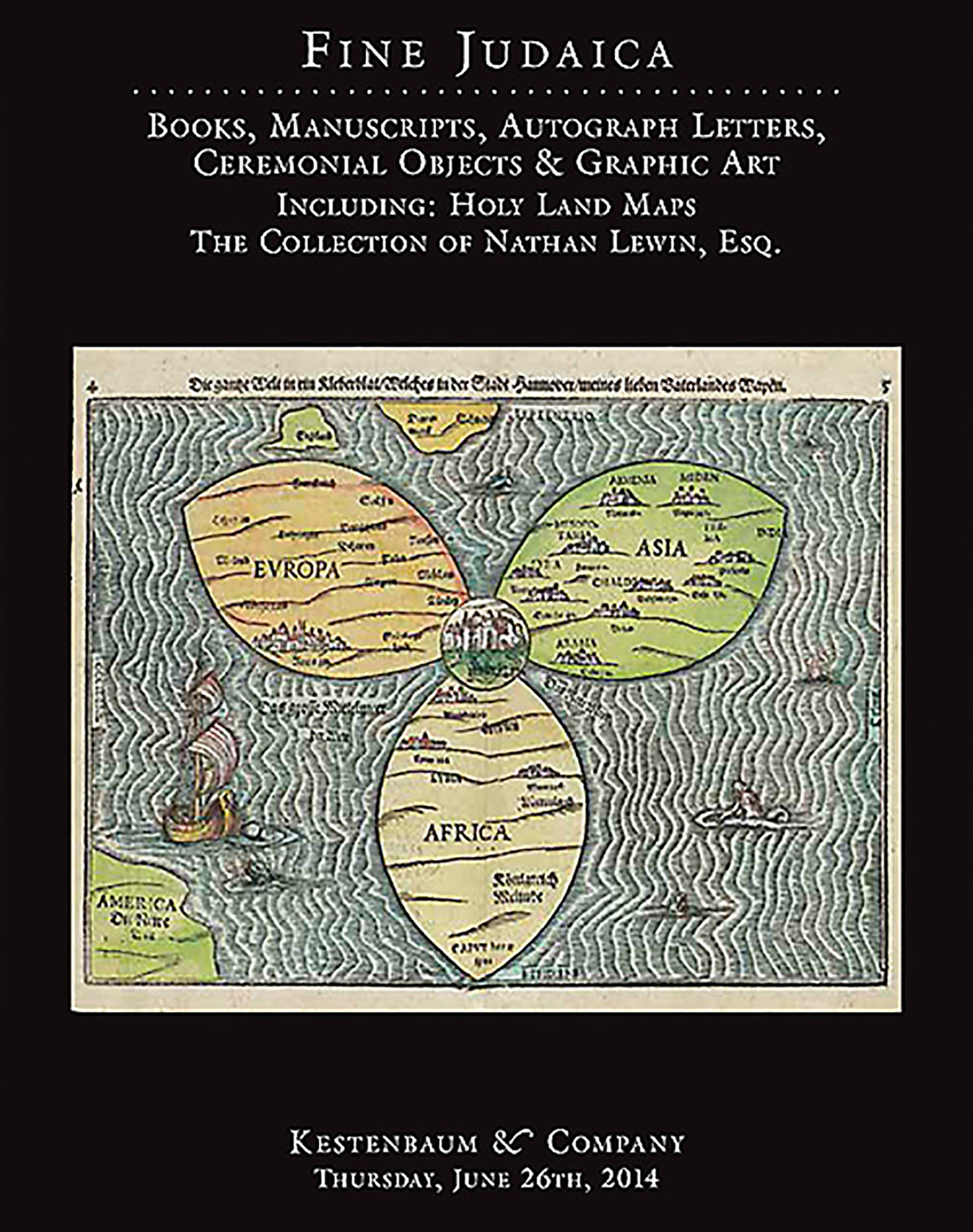(AMERICAN JUDAICA).

AUCTION 62 |
Thursday, June 26th,
2014 at 1:00
Fine Judaica: Books, Manuscripts, Autograph Letters, Graphic and Ceremonial Art
Lot 1
(AMERICAN JUDAICA).
Boston: Daniel Henchman 1722
Est: $8,000 - $10,000
Judah Monis (1683-1764) was North America’s first college instructor of the Hebrew language and author of the first Hebrew textbook published in North America (“A Grammar of the Hebrew Tongue,” Boston, 1735). Monis was also the first Jew to receive a college degree in the American colonies. Born in Italy into a family of former Portuguese conversos and educated at Jewish academies in Italy and Holland, Monis emigrated to New York City around 1715, where he established a small store and taught Hebrew to both Christians and Jews. By 1720 he moved to Cambridge, Massachusetts, home of Harvard College.
At that time, all Harvard undergraduates were required to study Hebrew. The assumption being that no Christian gentleman could be considered truly educated unless he could read the Bible in its original language. Monis was approved by the college as instructor of the Hebrew language - Harvard’s first full-time Hebrew instructor - but not as a Jew, since Harvard required all its faculty to be professing Christians. One month before assuming his post at Harvard, Monis converted to Christianity - a conversion that attracted widespread notoriety. Some Christian clergy expressed concern that Harvard’s requirement that its faculty members be Christian had pushed Monis to an insincere conversion. In the present three sermons Monis defended his conversion arguing he left Judaism out of religious conviction and not opportunism. Monis, the descendant of conversos, himself became a convert.
Monis’ life presents a particular case of how a Jew made a place for himself in colonial America. He came to Cambridge, which had no Jewish institutions, to teach Hebrew to Christian students. Having chosen to leave a mature Jewish community in New York City he entered Harvard as a Christian. But the Christian community looked on him with skepticism. Both the Cambridge First Church as well as the Harvard College records often refer to Monis as “the converted Jew,” “the converted rabbi;” and “the Christianized Jew.” Church records indicate concern that Monis may have quietly continued to observe the Sabbath on Saturday. The headstone of his grave in the Northboro churchyard bears witness to the double identity by which Monis lived in Massachusetts. Using the Christian image of a grafted tree for conversion, the inscription reads in part: “A native branch of Jacob see. Which once from off its olive brook/ Regrafted, from the living tree.” (Jewish Virtual Library).
